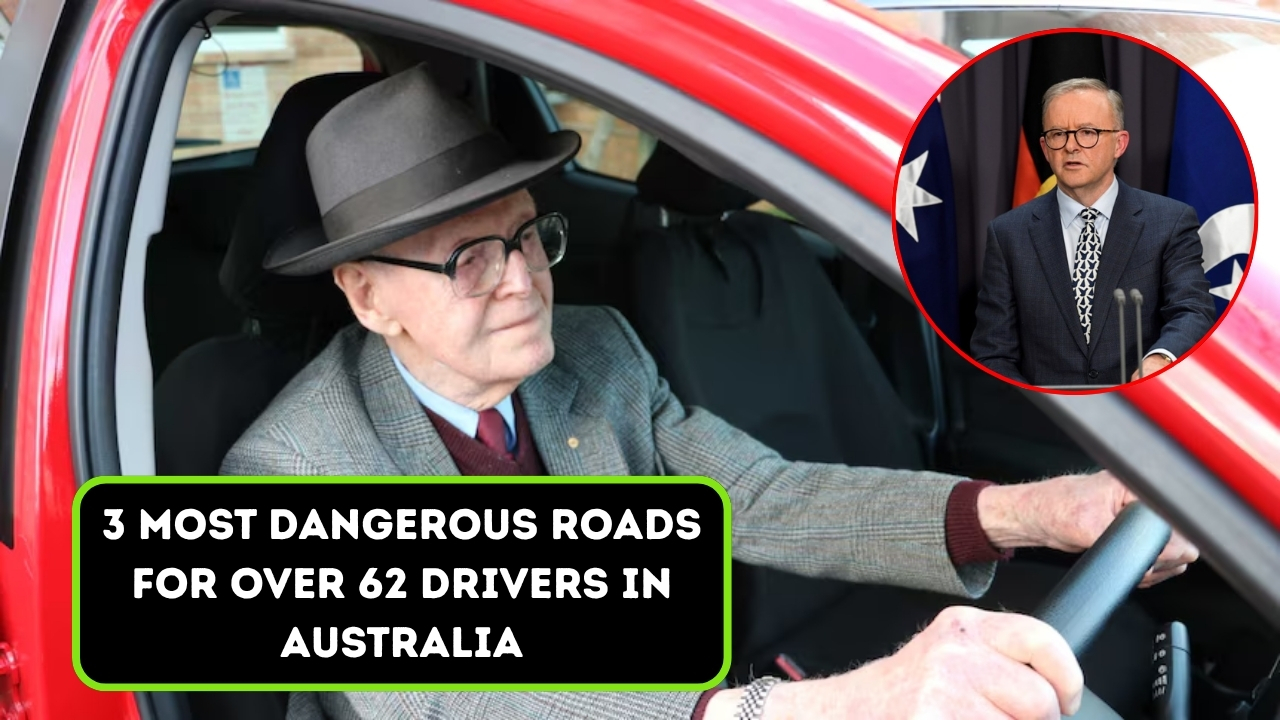When it comes to driving in Australia, age and road conditions often collide in ways that can’t be ignored. For drivers over 62, the risks are not just about declining reflexes or vision changes, but also about how certain roads are designed, how busy they are, and the unique hazards they present. Honestly, some roads are simply more unforgiving than others, no matter how careful you are behind the wheel.
Australia is known for its vast highways, scenic routes, and endless stretches of road that look postcard-perfect. But to be fair, behind that beauty lies danger—especially for senior drivers who may already feel more cautious on the wheel. New traffic safety data for 2025 has identified three of the most dangerous roads in the country specifically for drivers aged 62 and above. And let’s just say, if you or someone you love fits into this group, knowing these risks might just save a life.
So, buckle up as we go through the three riskiest roads for senior drivers, why they’re dangerous, and what you can do to stay safe.
1. Pacific Highway (New South Wales & Queensland)
The Pacific Highway is not only one of the busiest roads in Australia but also one of the deadliest, particularly for older drivers. Stretching from Sydney up to Brisbane, it’s a lifeline connecting two of the busiest states. But here’s the thing—its length and traffic volume make it a nightmare for those who prefer calmer, slower driving.
For drivers over 62, the challenges multiply. Long-distance fatigue sets in faster, and the highway’s history of head-on collisions and risky overtaking spots makes it particularly treacherous. Yes, a lot of upgrades have been done, but it’s still not perfect. Add in unpredictable weather—fog, rain, or sudden sun glare—and it becomes a cocktail of hazards.
2. Bruce Highway (Queensland)
If you ask any Queensland local about dangerous roads, the Bruce Highway will almost always make the list. And not without reason. This stretch has been labeled a “horror highway” multiple times due to its high accident rate. For senior drivers, the problem is two-fold: heavy freight traffic and complex intersections.
Overtaking trucks can be nerve-wracking at the best of times, but for someone with slower reaction times, it’s far riskier. The highway also has winding sections that demand sharp focus, and unfortunately, older drivers often report struggling with night glare from oncoming vehicles. Honestly, one small lapse in attention here can snowball into a serious accident.
To be fair, road authorities are working to make it safer with ongoing upgrades, but let’s be real—until it’s fully modernized, the risks for seniors will remain high.
3. Great Ocean Road (Victoria)
Now, this one might surprise you because the Great Ocean Road is famous for its breathtaking beauty. Tourists flock from around the world to drive along its scenic curves, ocean views, and cliffside charm. But on the flip side, beauty doesn’t mean safety. In fact, this road has some of the most dangerous driving conditions for older motorists.
Why? Narrow lanes, sharp bends, and constant twists. Not to mention the influx of tourist drivers who may not even be familiar with driving on the left side of the road. For seniors, that means constant adjustment, braking, and quick decisions—exactly the kind of thing that becomes harder with age. Add in wet weather or strong winds, and the road transforms from dreamy to downright dangerous.
It’s not unusual to hear of senior drivers losing control here, not because they’re reckless, but simply because the road demands too much.
Why These Roads Are Especially Risky for Seniors
You might wonder—why highlight roads specifically dangerous for those over 62? The answer lies in how age interacts with road design. Older drivers are more prone to slower reaction times, glare sensitivity, and fatigue. Combine that with high-speed zones, trucks, and winding routes, and the risks amplify.
Here’s a quick comparison table to break it down clearly:
| Road Name | State(s) | Key Risks for 62+ Drivers | Extra Challenges |
|---|---|---|---|
| Pacific Highway | NSW & QLD | Long stretches, fatigue, high traffic, glare | Weather changes |
| Bruce Highway | Queensland | Freight trucks, intersections, night glare | Winding sections |
| Great Ocean Road | Victoria | Narrow lanes, sharp bends, tourist traffic | Strong winds, wet roads |
Driving is often tied to independence, especially for seniors. Losing that freedom is tough. But safety should never be compromised. If you’re over 62 and planning a trip on any of these roads, take precautions—drive during the day, avoid fatigue, keep your car in top condition, and don’t rush.
Honestly, the road doesn’t care about age. But awareness, preparation, and caution can make all the difference. These roads might be dangerous, but with the right mindset, they don’t have to be deadly.
FAQs
1. Why are certain roads more dangerous for senior drivers?
Because age-related changes like slower reflexes and vision issues make already risky roads even harder to navigate.
2. Is the Pacific Highway safe to drive for seniors at all?
Yes, but only with precautions—avoid night driving, take regular breaks, and stick to speed limits.
3. Why is the Bruce Highway called a “horror highway”?
Due to its history of frequent accidents, heavy truck traffic, and tricky sections.
4. Can seniors still enjoy the Great Ocean Road safely?
Absolutely, but it’s best to drive in daylight, go slow, and avoid wet weather conditions.
5. Are there any government efforts to make these roads safer?
Yes, ongoing upgrades are happening, but full improvements will take time.




